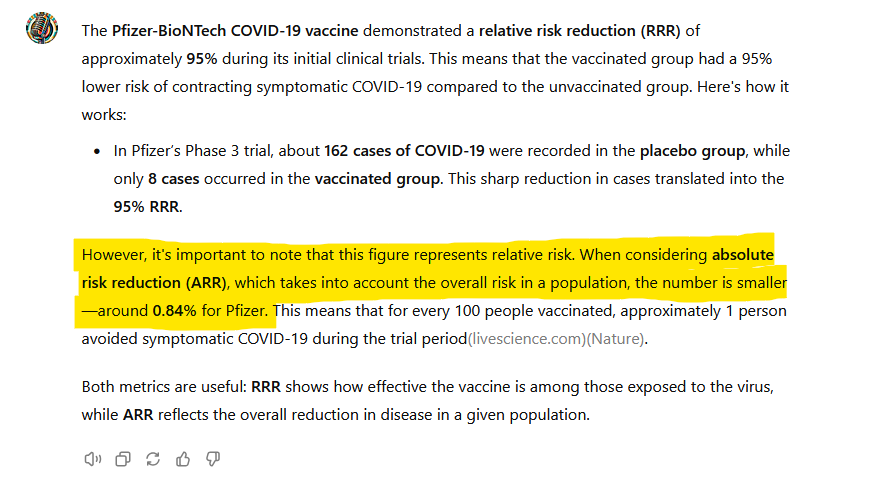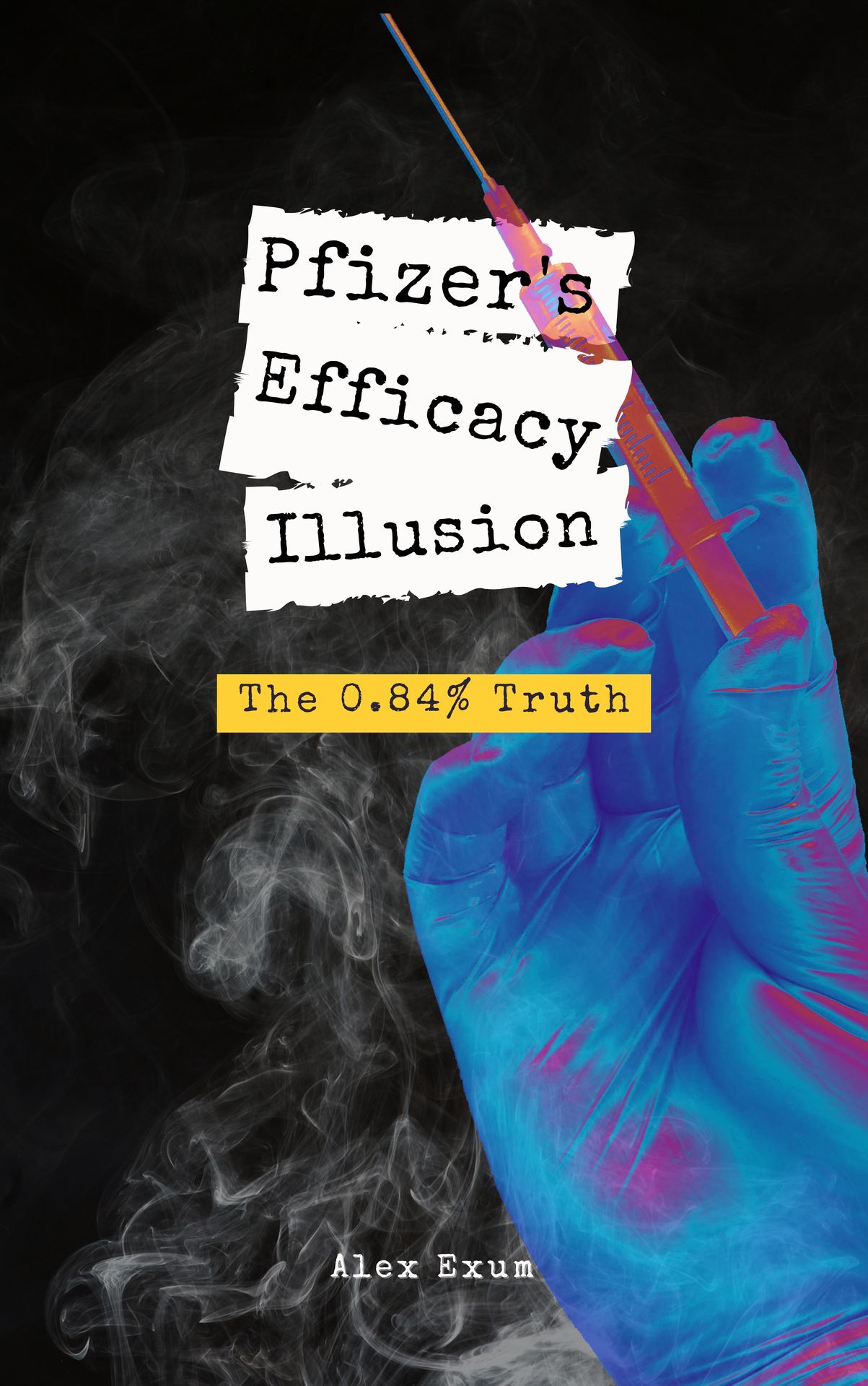As someone who has thoroughly researched and written a book on this very subject—Pfizer's Efficacy Illusion: The 0.84% Truth—let me clear up the confusion surrounding vaccine efficacy, especially when it comes to the widely promoted Pfizer-BioNTech COVID-19 vaccine. You’ve probably heard the headline-grabbing statistic: "Pfizer's vaccine is 95% effective!" But what does that really mean? Let’s break it down.
The 95% figure comes from Pfizer’s Phase 3 clinical trials. During these trials, 162 people in the placebo group contracted COVID-19, compared to just 8 people in the vaccinated group. This difference produced what’s called the Relative Risk Reduction (RRR)—a 95% reduction in the risk of contracting symptomatic COVID-19 for those who were vaccinated. Sounds impressive, right? On the surface, it certainly is.
However, what most people aren’t aware of is that this number only tells part of the story. The 95% figure is a relative measurement, meaning it compares the vaccinated group to the placebo group under trial conditions. But to get a more accurate picture of how the vaccine impacts the average person in the real world, we need to look at something called the Absolute Risk Reduction (ARR).
Here’s where things take a turn. The ARR for Pfizer’s vaccine during the trial was only about 0.84%. This means that for every 100 people vaccinated, less than 1 person actually avoided contracting symptomatic COVID-19. That's a far cry from the headline-grabbing 95%.

So why the difference? It’s all about context. While RRR shows how much the vaccine reduces risk in those exposed to the virus, ARR accounts for the overall risk in the entire population. It reflects the actual impact on the average person, considering the relatively low baseline risk of contracting symptomatic COVID-19 for most people. In other words, the 95% figure looks at a smaller, high-risk group, while the 0.84% gives us a sense of how much protection the vaccine offers in broader, everyday life.
Both metrics matter, but the general public was only told about the higher, more optimistic RRR. Understanding the difference between these two numbers is crucial for making informed decisions about vaccination.
If you want to dive deeper into this issue, including why these figures are so easily misunderstood and how the public has been misled, I encourage you to read my book, Pfizer's Efficacy Illusion: The 0.84% Truth. It explores the data behind these numbers, uncovers the full story behind Pfizer’s vaccine trials, and provides critical insight into how vaccine efficacy has been presented to the public.
In an era when accurate information is more important than ever, it’s essential to look beyond the headlines and understand the complete picture. Vaccines, like any medical intervention, should be analyzed based on all the available data, not just the most flattering numbers. After all, the truth lies in the details—details that even AI can confirm.



Even AI Knows the TRUTH About Vaccines